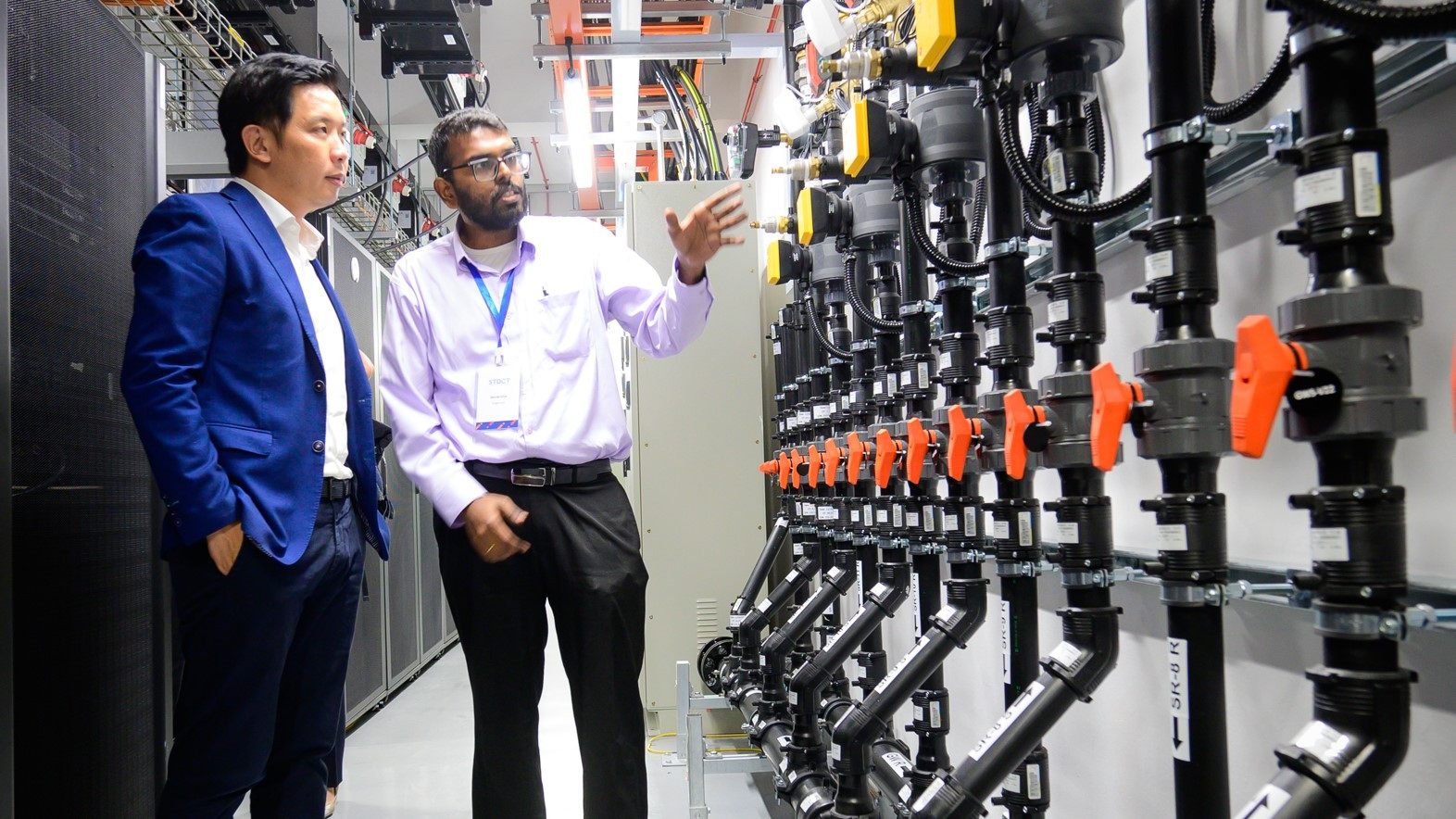
The Sustainable Tropical Data Centre Testbed (STDCT) - the first of its kind for the tropical environment - is up and running, marking a significant milestone in data centre (DC) innovation in Singapore.
The groundbreaking initiative, jointly led by NTU Singapore and National University of Singapore (NUS), is funded by the National Research Foundation in line with the Research, Innovation and Enterprise (RIE) 2025 plan[1] to position Singapore as a leading centre for green services and solutions to transform sustainable industries.
Bridging the gap between research and practical applications, this pioneer initiative brings together the academia and industry partners to fast-track the adoption of innovative and sustainable DC cooling solutions tailored for the tropical climate. These collaborative efforts will set new sustainability standards for DC operations in the tropics.
The STDCT, hosted by the NUS College of Design and Engineering (NUS CDE), which is the key infrastructure that supports a cutting-edge national-level research programme on DC innovations, was officially launched today by Minister of State for Trade and Industry Mr Alvin Tan, in the presence of distinguished guests from the academia research community and industry.
DCs are the backbone of the digital economy, and they are power-hungry facilities with a large appetite for electricity, especially for those located in hot and humid climates such as Singapore. On average, about 40 per cent of a DC's energy consumption goes into powering its cooling and ventilation systems. Efficient cooling technologies, which the STDCT will be pioneering, are therefore essential for reducing operation costs and lowering the environmental impact of DCs.
[1] The Research, Innovation and Enterprise (RIE) 2025 plan by the National Research Foundation is a strategic roadmap shaping Singapore's research and innovation activities over a five-year period. The RIE2025 aims to enhance Singapore's scientific foundation, broaden its innovation and enterprise ecosystem, as well as scale up technology translation and strengthen enterprise innovation capabilities






